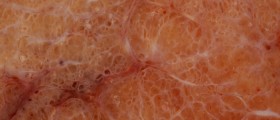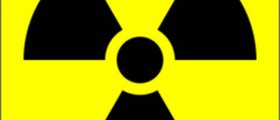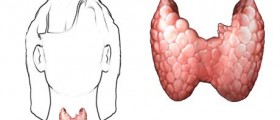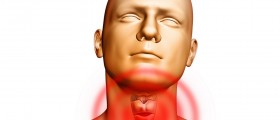There are not that many people in the world who know what thyrotoxic myopathy is. Those people who do not know should be aware that it is a neuromuscular disorder. This disorder occurs when there is an overproduction of the thyroid hormone thyroxine. It is also important that people know that thyrotoxic myopathy is one of the myopathies which are known to cause weakness in the muscles and the breakdown of muscle tissue.
Information on Thyrotoxic Myopathy
First of all, people need to know that this particular disorder needs to be treated as soon as it occurs because if it is left untreated it can lead to death. However, these worst cases do not occur that often. A person who is diagnosed with thyrotoxic myopathy does not need to worry too much because he or she will not suffer from any problems or lasting effects if the disorder is treated properly.
For the treatment to start as early as possible, people need to be able to notice the symptoms. It is important to know that the symptoms can be physical, acute, or chronic.

In case of physical symptoms, people need to know that they are well known. Some of the most commonly seen symptoms of thyrotoxic myopathy are muscle weakness, degeneration of muscle tissue, fatigue, and heat intolerance.
In case of chronic symptoms, people should be aware that they start showing up not that fast and after a certain period. The most commonly seen signs of chronic thyrotoxic myopathy are decreased exercise tolerance, increased fatigue, and certain problems with finishing some specific tasks after a period of half a year. These symptoms must not be taken lightly because they can only get worse if people do not treat them on time. It is not uncommon for people to experience problems with swallowing and various respiratory problems.
Acute thyrotoxic myopathy is not as common as chronic one but people need to know that they can be affected by it as well. In the case of acute thyrotoxic myopathy, the signs are seen after a few days. Most people who suffer from acute thyrotoxic myopathy experience muscle cramps and muscle pain because the muscle fibers are degraded rather fast by the acute thyrotoxic myopathy. Even though such signs as blurred vision and bulging eyes are not that common, people should know that they can occur as well.
Causes of Thyrotoxic Myopathy
People need to know that there are a few causes that are known to lead to thyrotoxic myopathy. However, out of all these causes, there are just two of them which are usually connected with myopathy. The first cause is called a multinodular goiter. This cause is known to occur when the thyroid gland becomes bigger due to it being studded with nodules. When that happens, the gland will produce a lot more tyrotoxine than is needed.
The other cause which occurs quite often is a certain disease called Grave’s disease. This disease is characterized by the launching of the autoimmune attack of the body on the thyroid gland and which then makes the gland create more thyroxine than required.
Treatment of Thyrotoxic Myopathy
A person who is diagnosed with thyrotoxic myopathy will not receive treatment from just one specialist. In most cases of this disorder, there is a need for a lot of specialists to collaborate for the proper treatment to be used. In most cases, these specialists are neuromuscular specialists, an endocrinologist, a surgeon, and an ophthalmologist. A physical therapist is also involved in cases where muscle degeneration is serious.
The main goal of the treatment is for the production of thyroxine from the thyroid gland to be reduced. The normal thyroid homeostasis must be returned to its normal state.
People need to know that there are three possible ways this can be done. These three ways are the use of medication, radiotherapy, and surgery. The most common medications prescribed are beta-blockers, propylthiouracil, and methimazole.
In the case of radiotherapy, radioactive iodine will be used for the thyroid gland to be destroyed because it is overactive. The gland needs iodine to create thyroxine and other hormones, but it cannot make the difference between the normal and the radioactive ones. When the thyroid gland takes the radioactive iodine it dies due to the radiation. This particular treatment is not a good one because if the entire gland is destroyed a person may end up developing hypothyroidism.
The third option is surgery, and the goal of this treatment is to remove the portions of the gland which can be used for the restoration of thyroid homeostasis as well.
Relevant Statistical Data
According to the data, women are more prone than men to hyperthyroidism. However, it is the men with hyperthyroidism who suffer more from the development of thyrotoxic myopathy. Out of all the patientsdiagnosed with the disorder, only 50% of them complained about the signs. The data shows that 75% of all the patients suffered from muscle fiber degeneration.
- We studied the results of research of 263 TM patients, 47 men and 216 women (151 cases of our own investigations and 112 published in medical literature).
- TM as well as the other endocrine muscle affections refers to the group of later myopathies. The age of the examined patients was from 16 to 70 years old (the average age 47.7 years old), the age of the patients described by some other authors was from 6 to 83 (the average age-50.3 years old). Some data say that both men and women suffer from this disease equally often; some researchers say that women suffer from this disease 2.3 - 5.6 times oftener than men.
- The majority of TM patients have symptoms of the disease that have been developing for 6 - 7 months since the beginning of thyrotoxicosis. The degree of the expressed myopathy does not depend on the severity and the duration of thyrotoxicosis, on the degree of increasing of thyroid gland and expressed of eyes symptoms.
- TM patients have “weak” muscles that keep very often normal volume and muscle being atrophied keeps muscular force in a considerable degree. Such disproportion between the degree of weakness and atrophy of muscles is a very important sign of TM. To our mind, the disappearance of subcutaneous fatty tissue created false impression of severe atrophy of the muscle.
- Some TM patients have weakness of proximal and distal muscles and simultaneously bulbar muscles are found to be affected. In these cases it is necessary to differentiate TM not only with muscular dystrophy (oculopharengeal (oculopharyngeal) form) but as well with proximal spinal muscular atrophy (PSMA).
- www.ninds.nih.gov/health-information/disorders/thyrotoxic-myopathy
- www.mda.org/disease/endocrine-myopathies/types/hyperthyroid-hypothyroid-myopathy
- Photo courtesy of Nephron by Wikimedia Commons http://commons.wikimedia.org/wiki/File:Myopericytoma_-_high_mag.jpg

















Your thoughts on this
Loading...